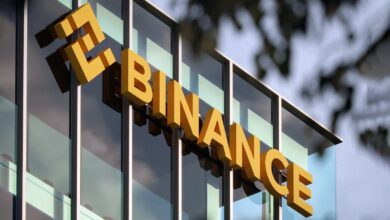UAE Internal Auditor’s Association discusses using Blockchain

Almost 20 per cent to 30 per cent degree certificates in the UAE are fake and employers can utilize Blockchain technology to detect fraud, according to Abdulqader Obaid Ali, Chairman of the UAE Internal Auditors Association (UAE IAA) Board. Addressing a breakfast meeting titled “How you can minimize fraud using Blockchain,” held in both Dubai and Abu Dhabi, Abdulqader said Blockchain technology can be utilized in education to reduce fraud.
Abdulqader also called upon internal auditors to embrace technology rather than fearing it. According to current data, 94% of current practice methods in audit will disappear. The new way of doing auditing requires more technological knowledge. Auditors should ask themselves if they have the capability and ability as auditors to understand as to how they are really working.
“Auditors need to be in the forefront in an organisation to see what’s happening on the technological front and be ahead of it. The role of internal auditors is becoming more important than in the past,” he said. “Future technology is shaping internal audit. Now that Dubai will be a paperless environment by next year, auditors will have to perform their audit job without physical papers as everything is going to be online,” he said.
“Between 20 and 30% of degrees in the UAE are fake. It is a really scary situation to realise that many people employed in our organisations have fake degrees. In education, Blockchain technology can be utilised in different verticals and we can capture all information about an employee, including his degree and experience. One of our mandates, as auditors, is to audit the HR system. When conducting a background check, it can be astonishing to find that a few degrees are fake. Utilising Blockchain technology, a genuine degree can be authenticated,” he said.
Fraudulent paper-based certificates are rampant and getting easier with sophisticated operations. Certificate registries are single points of failure, while the certificates may remain valid and the ability to verify them is lost.
Once a certificate is issued there is no way to revoke it. Security features in the physical certificate derive exclusively from the expertise required to print the document. The more secure the certificate, the more expensive it is to produce. Abdulqader suggested that businesses will benefit by publishing credentials of certificates on the Blockchain, as they can’t be faked or forged. “It’s a new paradigm of security. Reduce reputational risk and administrative burden from fraud cases on paper-based certificates,” he said.
Abdulqader listed three types of frauds that are detected: Financial frauds, Identity frauds and Supply chain frauds. Blockchain can help in combating financial fraud and it can help in fraud detection by enabling the sharing of information in real-time and updating the ledger upon the agreement of all parties. This will not only prevent fraud but also lower the overall cost and time taken for the process.
Identity theft is one of the serious issues that has impacted consumers across the globe in the past few years. Blockchain ensures the security of the digital ID of an individual in a manner that makes it tamper proof. Supply chain fraud is also a major issue that is faced by several companies recently. Blockchain helps in preventing fraud by more transparent and easily traceability of products. “Blockchain will create perfect conditions for every growing eco-system with cross-industry organization collaborations across geographical boundaries,” he said.
Abdulqader also urged the internal auditors to attend the forthcoming 20th Annual Regional Audit Conference (ARAC) hosted by the UAE Internal Auditors Association (UAE IAA) at the Dubai World Trade Centre (DWTC) from April 12 to 14, 2020 under the theme “Future Technology Shaping Internal Audit”.
He highlighted that the conference will be addressed by world class speakers, there will be networking opportunities with like-minded professionals and industry leaders from the profession.




